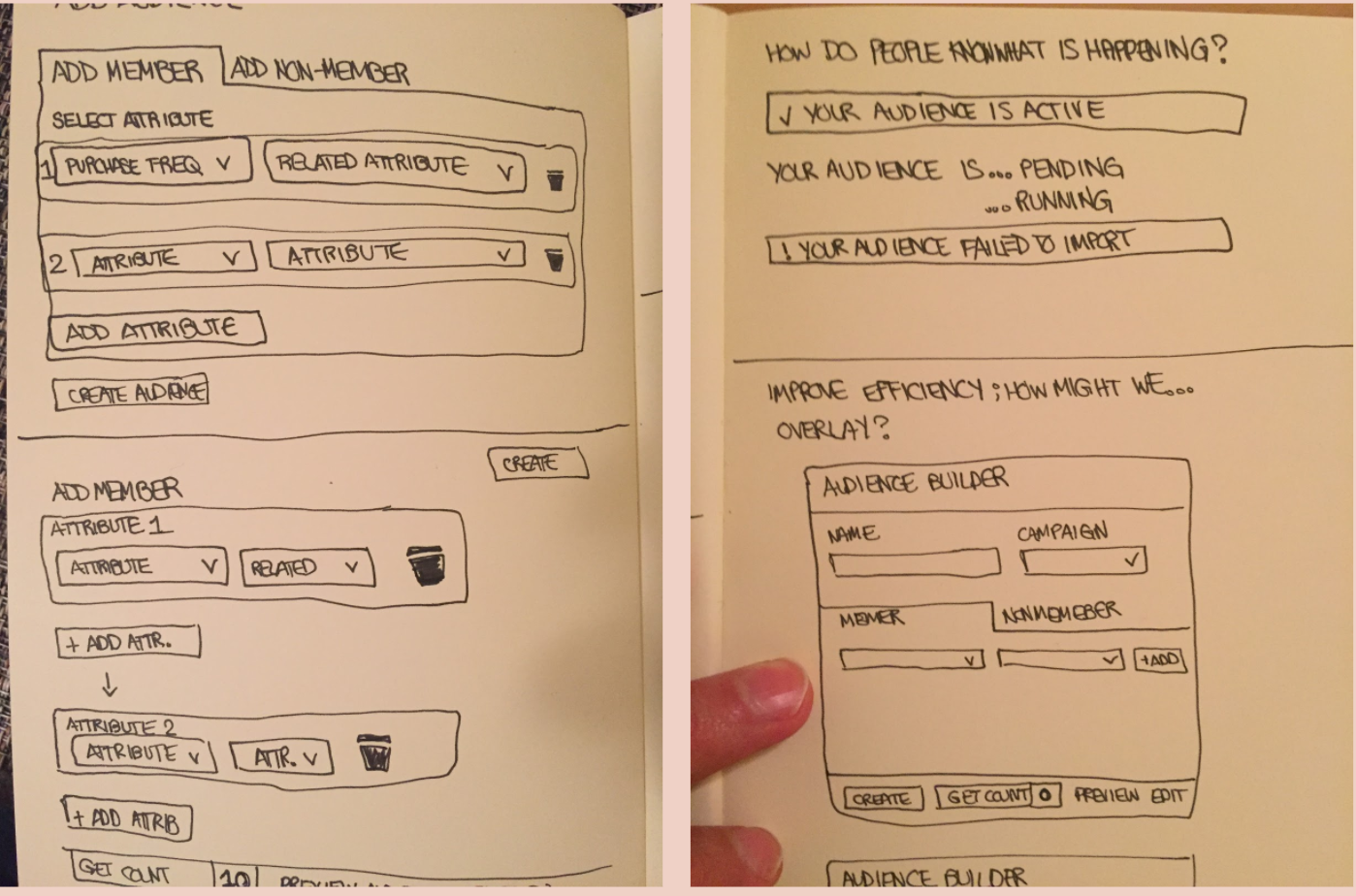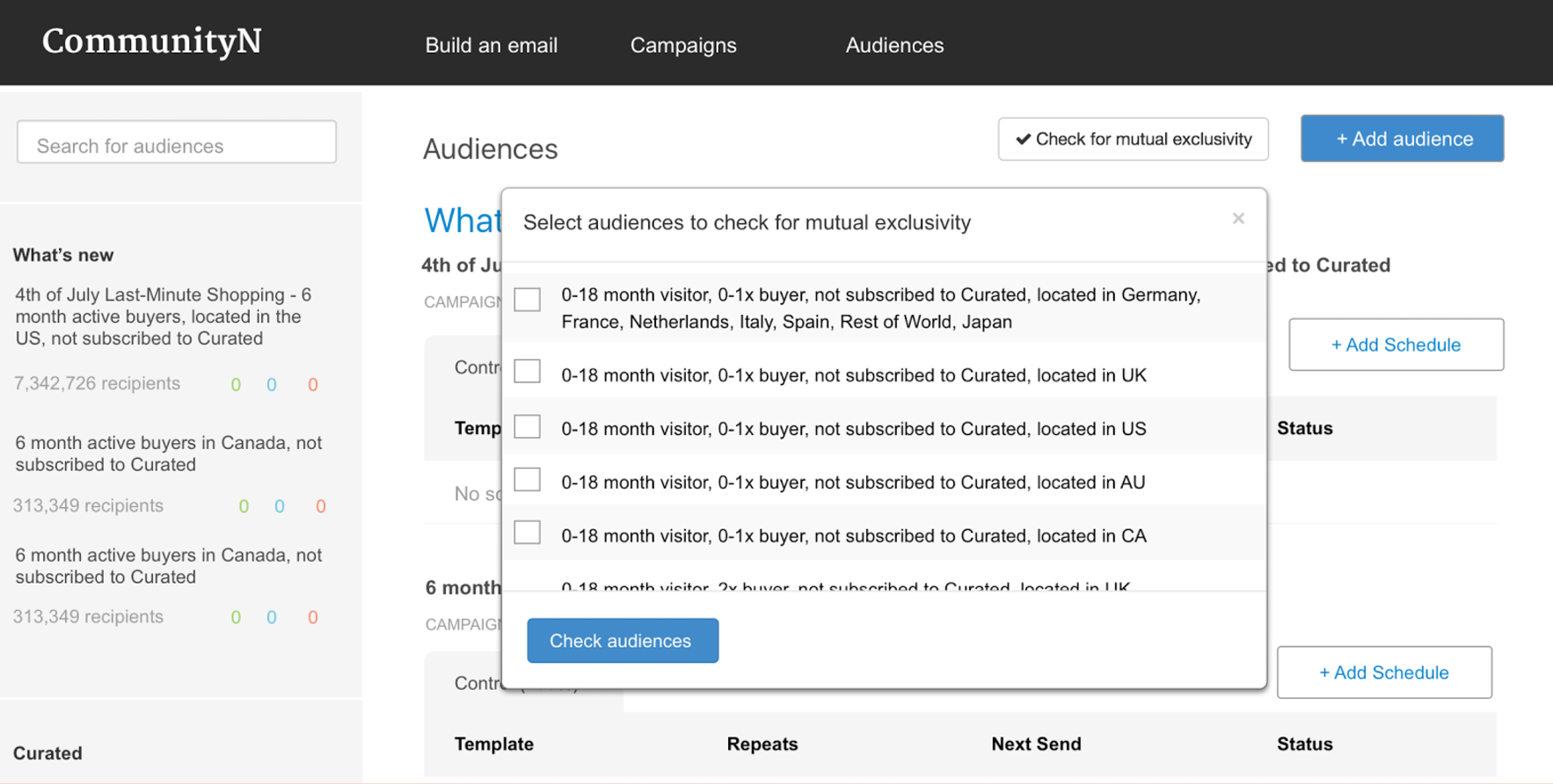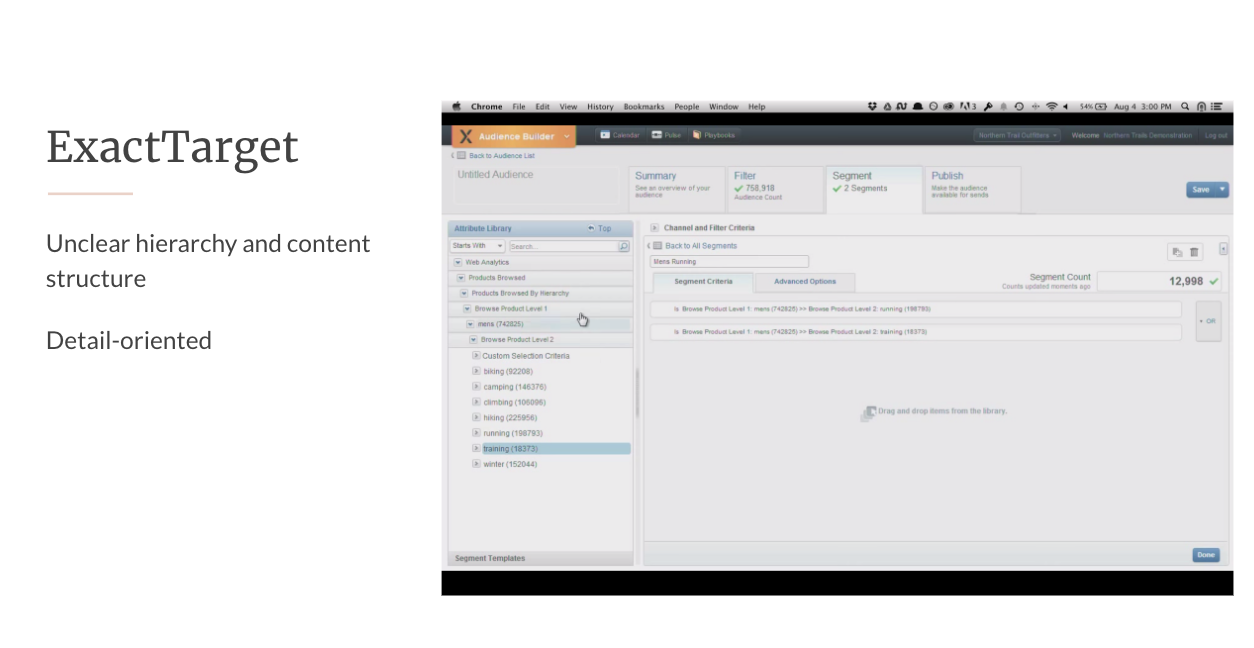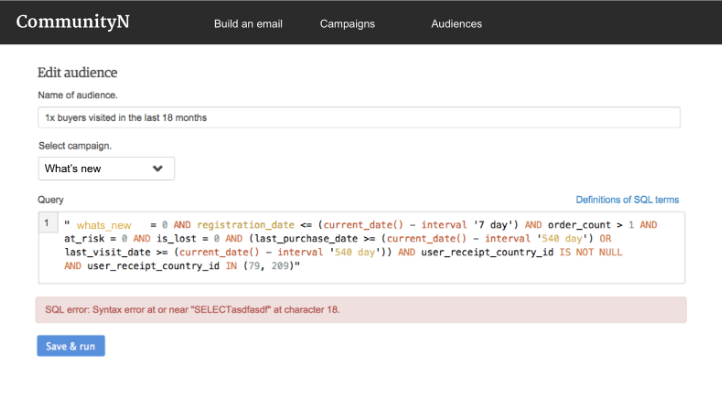The vision
Customers are more than just a gender and location recorded in some database. Teams need tools to understand the behaviors and preferences of customers in order to provide them with the best possible experiences while simultaneously influencing their purchasing plans. Three tools resulted from this work: audience segmentation, mutual exclusive validation and dynamic targeting.
Discovery
To understand why a company’s customer growth has stagnated, a series of survey was sent to customers.
The results was showed that when customers receive communication from a company, the expectation is to deliver products that are relevant to them.
As companies continues to grow and build profiles, it needs to understand their customers’ behaviors, interests and a million other digital interactions on an on-going basis.
Audience segmentation allows companies to track, segment, and revamp their messages to match their audience. Sending the wrong message to the wrong audience, not only wastes time, it also can harm the relationship with potential customers.
When an audience is segmented, you want to make sure that people are not receiving the same email twice. Avoiding duplicates help send targeted emails to the right users. The mutual exclusive validation tool would compare the selected audiences and look for users that appear in more than one of the selected audiences based on a set of criteria.
Scope
Working with the product and engineering managers, we serialized each breakdown of the phases and created job stories. Using job stories helped developers understand the context to solving the problem while building the product
Competitive Analysis
How do other companies solve this?
Determine Approach
Leverage existing infrastructure to be built faster and extend the platform to be what people were familiar with using.
This early architectural decision had a major impact on the quality of the customer experience we could both create and reconcile.
Each feature phase of the project was serialized, starting with the development for the MVP feature and design first. Once each feature was designed and approved, the engineering team began the implementation.
I followed by working with platform engineers to translate MVP feature into context and developing HTML and CSS for a skeletal framework. Simultaneously, I would design the next feature in the pipeline, whilst also working with my own engineers to execute the current feature through to completion.
Design
The team was used to writing SQL yet would need to check in with the data analyst to be sure their code was accurate.
Wireframes


Audience segmentation
Mutual exclusive validation



